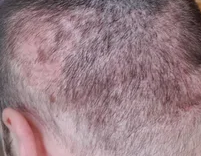I can only afford to have my bald patches of my hairline transplanted (FUE) so no other areas of hair will be near. Will the shock loss only affect the donor follicles? or does all of your head hair fall out?
While price/cost is a factor for any cosmetic surgery, it should not dictate the surgery itself. Having cosmetic surgery is not like shopping for the cheapest loaf of bread, laundry detergent, or shoes.
When shock loss occurs, it may be the result of the anesthesia given to numb the head for the transplant and may cover a large area of the scalp, not just the area where the grafts are placed. The mechanical impact of the transplant may not be the cause of shock hair loss. You also have to look at the big picture. We call this the Master Plan. Surgery must be placed along your hair loss timeline and it will be progressive. In other words, you can’t just transplant hair to the small bald patches and expect that to solve your problem, as the balding process is regional. What if you lose more hair around the transplant and behind it as your balding continues? A good doctor should give you insight on your worst case scenario and plan for such consequences. After all, you don’t want to have small patches of transplanted hair scattered around your bald scalp in the years down the line “IF” you were to go bald.
To answer your question in further detail, shock loss is a concern… and while it may not happen, it is a risk. I have addressed your question with the assumption that you have genetic male pattern baldness and not just a patch of bald scalp (which is very rare in genetic balding). Either way, you need a Master Plan created with a doctor (not just me on the Internet) who is willing to look at your hair loss problem as a long term process.
For the follicular unit extraction (FUE), you need to understand it does not work to fill in the scalp balding areas like a patchwork quilt. Do not let the cost of FUE be the primary reason in your decision making process as to what to do and where to put the hair. It is better to be bald than be disfigured with a half-ass surgery.


